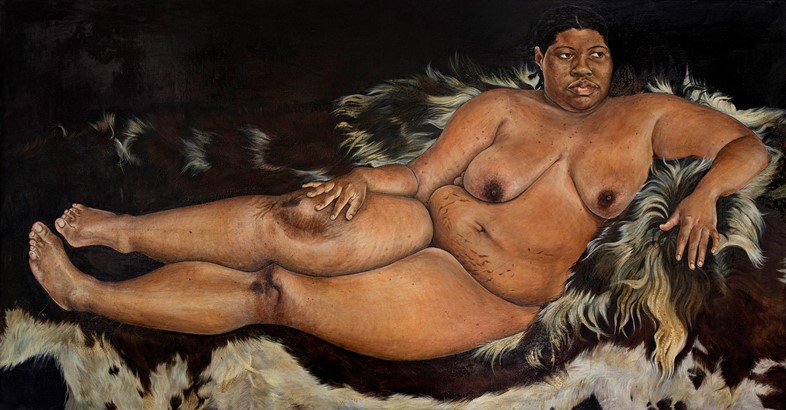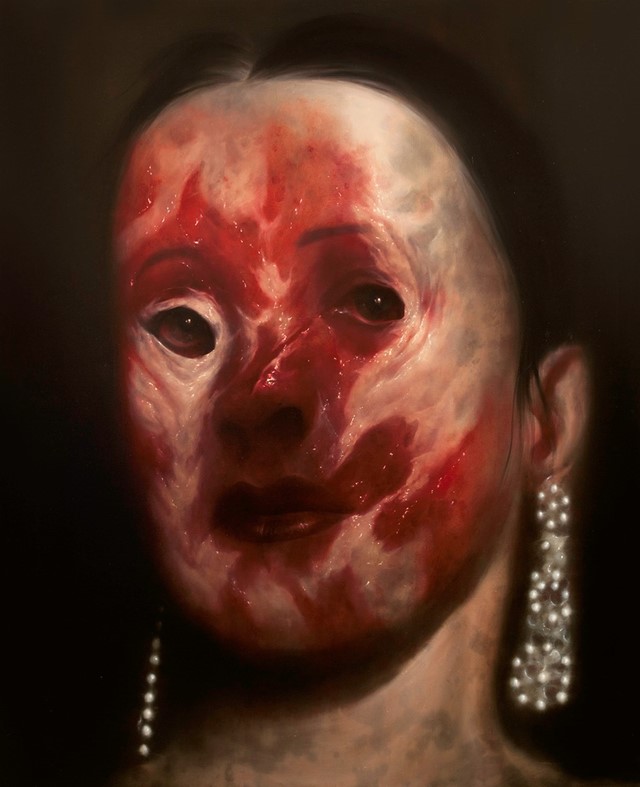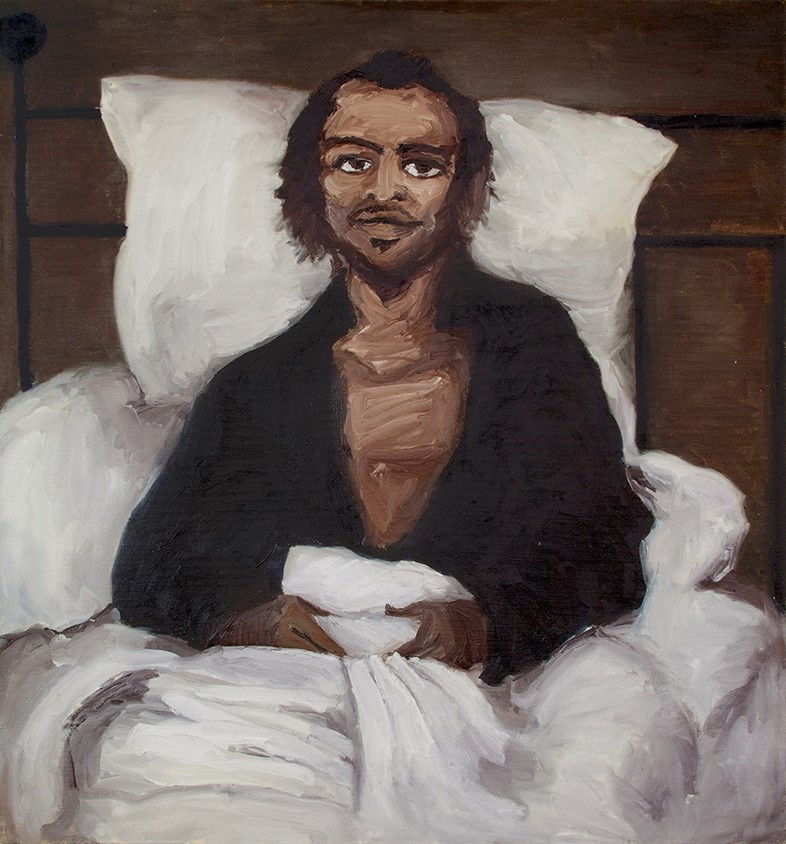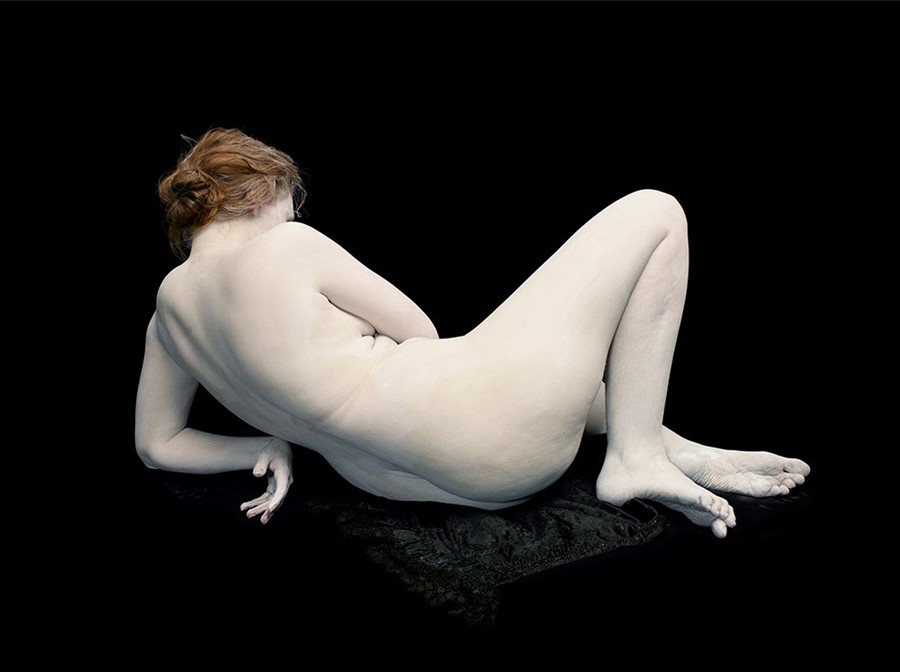A new exhibition considers the myriad interpretations of the human body in contemporary British art
From primitive etchings of hunters on cave walls and classical depictions of resplendent gods and heroes to Picasso’s pixelated, Cubist protagonists and Lucien Freud’s distorted, emotionally charged silhouettes, the human figure has beguiled and inspired artists for thousands of years. Now a new exhibition at London’s Flowers Gallery hones in on its influence on contemporary British artists over the past 30 years, showcasing a diverse range of work from the likes of Ishbel Myerscough, Ken Currie and Lynette Yiadom-Boakye. Here, we consider some of our favourite pieces from the exhibition, which prove that the figurative genre is still going strong, continuing to inspire artists in new and unexpected ways.
The photographic body
At first glance the image of Audrey with Toes and Wrist Bent (2011) (see image above) by London based artist Nadav Kander looks like a painting, thanks to the rich and luxuriant surface of the work. In fact this work is a photograph and the effect was created by covering the sitter’s body with white marble dust, suggestive of the figures in marble friezes across classical buildings. The pale body and twisted limbs reference the work of 19th century painter Sir Frederic Leighton.

The recumbent body
In a similarly composed work, figurative artist Ishbel Myerscough’s recumbent nude Krishenda (1995) is a voluptuous woman, posed languidly. Throughout her artistic career Myerscough has depicted the human body with acute observation, mapping the particulars of the skin with infinite detail. She describes her practice as “an expression, a physical observation, an exploration, a dissection, a concentration, an obsession, a release.” Decadently resting upon a bed of furs, the exaggerated fleshiness of the figure is highly reminiscent of the fuller figured bodies depicted by Baroque painter Rubens, as well as Benefits Supervisor Sleeping by Lucien Freud, which was painted in the same year as Krishenda.

The abstract body
An abstracted representation of the human body can be found in Amanda Seated Wearing Boots (1993-5) by Maggi Hambling, where a lone figure is painted in a sequence of messy red lines against a black void-like background. Formally, the work recalls the Renaissance figurative studies in chalk carried out by training artists as part of their education, while stylistically it displays similarities to the portraits of expressionistic painter Frank Auerbach who applies paint chaotically, using string-like brushstrokes to evoke the essence of the subject.

The vile body
Scottish artist Ken Currie is well-known for his early work – gritty and realistic portrayals of Glasgow’s industrial city life – but Transfigurations 3 (2013) is part of a series that depicts portraits of upstanding and formal looking people, often wearing suits or expensive jewellery with their faces decaying, rotting, bleeding, melting and putrefying. This painting appears to hint at a dialogue between Francis Bacon, who also explored the more raw elements of human existence, and the portraiture of 17th century painters Rembrandt and Velázquez.

The imaginary body
Turner Prize nominee Lynette Yiadom-Boakye’s works are unusual in that they are portraits of people that do not exist. Created from the artist’s imagination, she describes them as “suggestions of people”. Sack (2005) features a lone figure sitting up in bed and it is unknown whether the subject of the painting is unwell or simply resting – the open-ended narrative gives the work an aura of compelling mystery that defines much of the artist’s work. Yiadom-Boakye cites French Impressionist painters Edgar Degas and Édouard Manet as her influences, but writes that “I wasn’t intimidated by those painters. It made it easier: there was so much I could look at, and learn from.”
The British Figure is on display at Flowers London until August 29.
